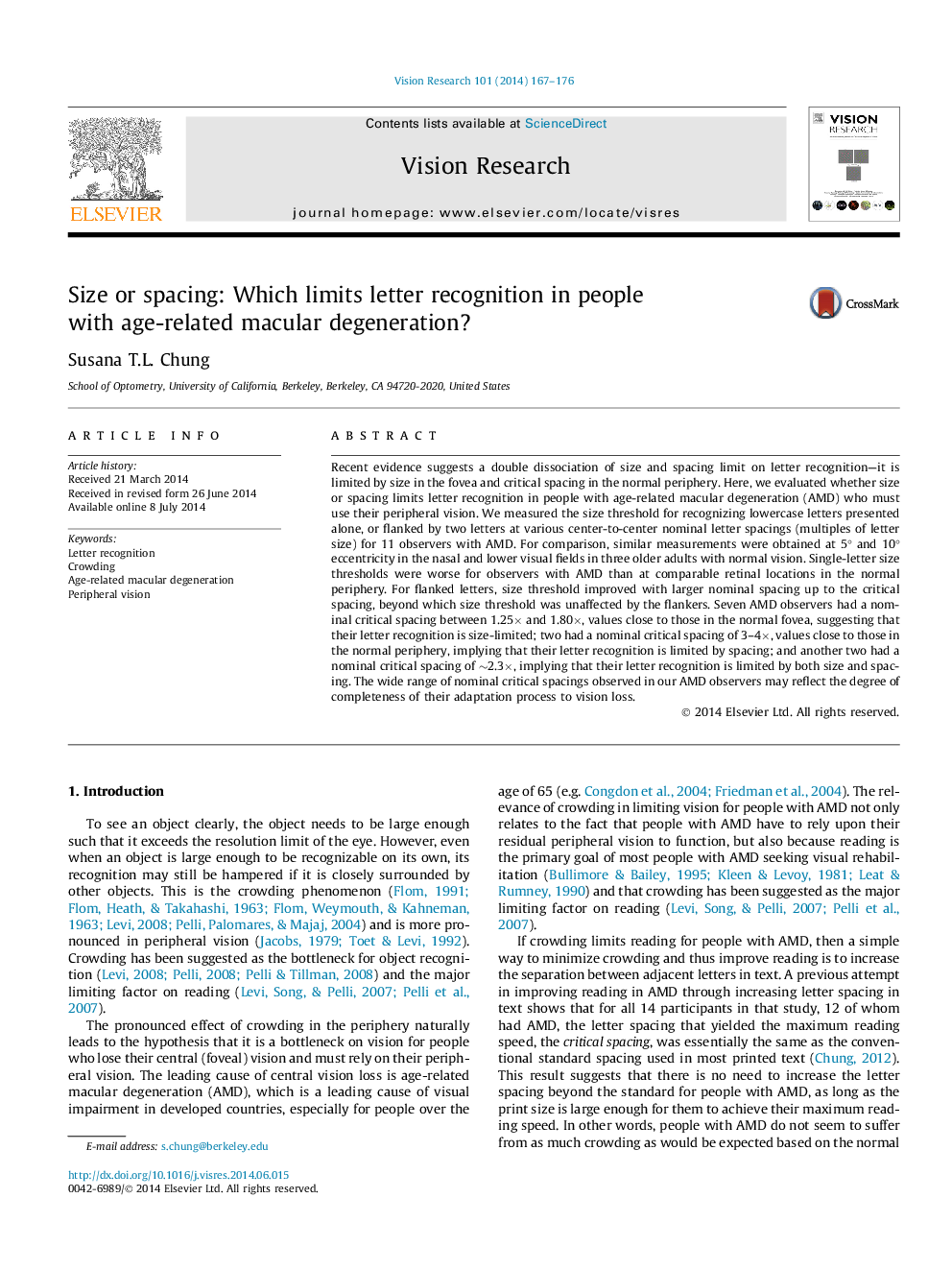| Article ID | Journal | Published Year | Pages | File Type |
|---|---|---|---|---|
| 4033724 | Vision Research | 2014 | 10 Pages |
•Letter size thresholds obtained in adults with age-related macular degeneration (AMD).•Single letter size thresholds worse in the periphery of AMDs than in normal periphery.•Flanked letter size thresholds worsened with spacings smaller than critical spacing.•Nominal critical spacing is 1–2× in the normal fovea and 3–4× in the normal periphery.•7 of 11 AMDs had a nominal critical spacing comparable with that of the normal fovea.
Recent evidence suggests a double dissociation of size and spacing limit on letter recognition—it is limited by size in the fovea and critical spacing in the normal periphery. Here, we evaluated whether size or spacing limits letter recognition in people with age-related macular degeneration (AMD) who must use their peripheral vision. We measured the size threshold for recognizing lowercase letters presented alone, or flanked by two letters at various center-to-center nominal letter spacings (multiples of letter size) for 11 observers with AMD. For comparison, similar measurements were obtained at 5° and 10° eccentricity in the nasal and lower visual fields in three older adults with normal vision. Single-letter size thresholds were worse for observers with AMD than at comparable retinal locations in the normal periphery. For flanked letters, size threshold improved with larger nominal spacing up to the critical spacing, beyond which size threshold was unaffected by the flankers. Seven AMD observers had a nominal critical spacing between 1.25× and 1.80×, values close to those in the normal fovea, suggesting that their letter recognition is size-limited; two had a nominal critical spacing of 3–4×, values close to those in the normal periphery, implying that their letter recognition is limited by spacing; and another two had a nominal critical spacing of ∼2.3×, implying that their letter recognition is limited by both size and spacing. The wide range of nominal critical spacings observed in our AMD observers may reflect the degree of completeness of their adaptation process to vision loss.
